1. The ups and downs of the land of "Little Capital".
Hung Yen is an ancient alluvial land of the Northern Delta, created and formed tens of thousands of years ago. During the Hung King period, Hung Yen belonged to Giao Chi department, Chu Dien district. During the Ngo period, it was called Chau Dang. During the Tien Le period, it was changed to Thai Binh prefecture. During the Ly period, it was called Chau Dang, Chau Khoai. During the Tran period, it was named Long Hung road and Khoai road. During the Later Le period, it belonged to Son Nam town, then divided into two roads, Son Nam Thuong and Son Nam Ha. During the Nguyen period, in the 12th year of Minh Mang (1831), administrative reform was carried out, towns were abolished, provinces were established, and five districts were separated: Dong Yen, Kim Dong, Thien Thi, Phu Cu, Tien Lu belonging to Khoai Chau prefecture of Son Nam Thuong town and three districts Than Khe, Duyen Ha, Hung Nhan belonging to Tien Hung prefecture of Nam Dinh town, Son Nam Ha town were established as Hung Yen province. The provincial capital was initially located in two communes, An Vu and Luong Dien, then moved to Nhi Tan beach, Xich Dang commune (today's Hung Yen city). Here, water and road traffic is convenient, villages and markets are connected to each other, buying and selling is bustling day and night.
Since the Hung Kings founded the country, the residents here have known how to grow rice, fish, raise silkworms, weave cloth, grow medicinal herbs... As pure Vietnamese residents, generation after generation settled down to live on the land in the center of the Northern Delta, so they have shaped the customs, psychology, and personality of the Hung Yen people and accumulated within them a rich historical and cultural tradition.
In the early 13th century, this place became an extremely bustling trading port with "three directions in the upper and three directions in the lower", namely Xich Dang, Dang Chau, Dang Man and Hoa Dien, Hoa Cai, Hoa Duong. By the 17th century, under the Le - Trinh dynasty, this place became Pho Hien with a river port of Van Lai Trieu, bustling with foreign ships coming and going for trade. The stele of Hien pagoda erected in the 7th year of Vinh To (1625) reads: "Hien Nam is famous as the four directions of the capital of Trang An" (Pho Hien is the small Trang An where four directions converge).
Compared to the capital, Pho Hien not only served the domestic market but was also a border gate. In the first three decades of the 17th century, many Japanese seal ships docked at Pho Hien. The Chinese arrived here very early, from the southern provinces of China, the largest of which was Fujian. They both traded and acted as brokers for foreign merchant ships. For Dang Trong, Pho Hien was also the center for transporting goods for the Thuan - Quang region, despite the prohibition of the Le - Trinh feudal government.
The land was fertile, the people were hard-working and honest, and more and more villages sprung up. Rice fields replaced mangrove forests, and wild animals gave way to poultry. Right in Hung Yen city (now on To Hieu street), there was Can gate - Heaven's gate (commonly known as Gan gate) covering the entire Luoc river mouth, with vast waves, boats passing by often sank, and fishermen were terrified. History recorded terrible floods from 1806 to 1898, where the dike broke 39 times (according to Dai Nam Nhat Thong Chi; Dai Nam Thuc Luc Chinh Bien of the National History Institute of the Nguyen Dynasty). At Can (Gan) gate, many corpses were washed up here. That's why the residents here built a small temple to worship the gods, hoping that they would bless the boats and people in the area.
In 1747, there was a big storm, the flood water rose, there was a giant ironwood tree drifting from the upstream along the vortex at Can estuary, refusing to drift out to sea. People from many villages came to pull it up but could not, only the villagers of An Vu asked the officials at the temple to bring the ironwood tree up, then the dignitaries in An Vu village, An Tao commune, Kim Dong district (now Hien Nam ward, Hung Yen city) asked the gods for permission to mobilize young men to cut wood to make three inner rooms and five outer rooms, then asked to move the officials worshiped at the temple outside the dike to the temple and from then on the villagers here called it Bach Linh Quan Temple (worshiping 100 gods of 100 families). This temple was built in the shape of the letter T, the three outer rooms were built in the style of planting beds, carved with images of coins and dragons, unicorns, turtles, and phoenixes; the three inner rooms worshiped Quan Bach Linh. To the northwest there was a large, tall gate, two floors, eight ancient roofs. The temple has 1 mau and 2 sao of land given to a villager (the villagers often call him Mr. Muc) for cultivation, and daily incense and candles are burned for worship. Every year, on the 3rd day of the 12th lunar month, the villagers of An Vu set up an altar to worship the mandarins and the souls who have drifted here, to pray for a peaceful new year, a bountiful harvest, and prosperous business. The head of the altar ceremony is always the provincial mandarin and the village elders. Therefore, the villagers here also call the Bach Linh Quan Temple the Altar of the Soul.
After the province was re-established, To Hieu road was upgraded and a pumping station was built. The workers who built the road and the pumping station collected nearly a thousand coffins, which they held a ceremony to transfer to Dieu pagoda for burial. According to the elders, this was only a very small part, while most of the coffins are still deep underground along To Hieu road and An Vu village today.
2. Try to decode the mysteries of Bach Linh Temple and Am Hon Altar.
It can be said that the Bach Linh Temple and the Am Hon Altar were once a famous spiritual place in the ancient land of Hung Yen and Pho Hien. The two communes of An Vu and Luong Dien themselves were once the provincial capitals of Son Nam Ha town during the Later Le Dynasty and the Nguyen Dynasty in the 12th year of Minh Mang (1831). An Vu village can also be considered an ancient village from the Hung King period, the evidence of which is An Vu Communal House (built on a 3135m2 campus in An Vu quarter, Hien Nam ward, Hung Yen city today). This is the outpost watchtower of ancient Pho Hien. The communal house worships Cao Son Dai Duong, who is known by the people as the Golden God. The god's name is Nguyen Hien, from Thanh Uyen commune, Thanh Ba district ( Phu Tho ). He was a famous general during the time of King Hung Due Vuong, who became sworn brothers with Tan Vien Son Thanh. The two of them helped King Hung defeat the invading Thuc army, gaining independence for the nation. After his death, the villagers of An Vu honored him as the village's Thanh Hoang and built a temple to worship him for a thousand years.
Through research in Vietnam, there are two temples called Bach Linh Temple. The first temple is an ancient temple located in Du Xa Thuong village, Hoa Nam commune, Ung Hoa district (Hanoi city), which is the place to worship Dinh Tien Hoang De and 100 gods of 47 communes of Hoai An district, Ung Thien prefecture, Son Nam Ha town in the past, now Ung Hoa and My Duc districts in the south of Hanoi. The names of the gods are recorded in ancient stone steles currently preserved at the temple. The second temple is located in An Vu village (now To Hieu street, Hung Yen city) and also worships 100 mandarins of 100 Vietnamese families. So whether there is any connection between these two temples is still a mystery that historians need to continue to research. But in recorded history on the ancient land of Hung Yen, in 214 BC, the Qin army invaded Au Lac, the local people fought side by side in the army of Truong Bao (Trieu Duong, Tien Lu). For a thousand years under Chinese rule, the people of Hung Yen had nurtured a will of hatred. In the spring of 40, the Trung Sisters rose up against the rule of the Eastern Han Dynasty. Among the generals were many generals from Hung Yen, including female general Tran Thi Ma Chau (Hung Yen city), Tran Luu (Dao Dang, Hung Yen city). The country gained autonomy, the Southern Han Dynasty threatened to invade, in 938, Ngo Quyen set up headquarters in Vuong Street (Pho Giac, Tien Lu) to prepare to fight the enemy. A talented general, Pham Bach Ho, the chief of Dang Chau, brought 1,000 troops to join forces to help. Pham Bach Ho himself brought troops back to Dai La to kill Kieu Cong Tien (Ngo Quyen's father-in-law, who had asked for help from the invading Southern Han army). The naval battle on the Bach Dang River commanded by Ngo Quyen, in which the enemy's main general, Hoang Thao, drowned, was due to the coordination of General Pham Bach Ho. The victory over the Southern Han army on the Bach Dang River opened an era of independence for Vietnam. The King of Ngo appointed him as the governor of Dang Chau (the area of Khoai Chau, An Thi, Kim Dong, Tien Lu, and Hung Yen city today). Then he was given the title of Phong At Tuong Cong, to guard the entire Hai Dong region (the area of Nam Hung Yen, Hai Duong, Hai Phong, and Quang Ninh today). In 944, Ngo Quyen died, Duong Tam Kha usurped the throne of Ngo Quyen's eldest son, Ngo Xuong Ngap, and Pham Bach Ho married his daughter, Pham Thi Ngoc Dung, to Ngo Xuong Ngap. After Duong Tam Kha was overthrown, he supported the career of Ngo Xuong Van, also known as Nam Tan Vuong - the later Ngo Vuong. In 965, when the later Ngo Vuong died, heroes from all over the country rose up to establish their own territory. Pham Bach Ho guarded the Red River estuary, an important gateway to Dai La, and governed a large area of land, helping people reclaim wasteland and alluvial land for agricultural production. Pham Bach Ho was the leader of one of the 12 warlords occupying the Dang Chau region at that time. When Dinh Bo Linh raised the flag of uprising, suppressing the rebellion of the 12 warlords, in early 966 he was the first warlord to submit and cooperate with Dinh Bo Linh and was appointed by King Dinh as the General of the Royal Guard, with the first merit in helping King Dinh in just one year (967) suppress the rebellion of the 12 warlords, establishing the Dai Co Viet state with the Dinh dynasty (968-980). He was one of the talented generals with great merit and was highly regarded by both the Ngo and Dinh dynasties. Currently in Hung Yen, there are many relics worshiping the Dinh dynasty (17 relics), of which Hung Yen city has two relics, one is Kim Dang Temple in Lam Son (Hung Yen city) worshiping General Dinh Dien and his wife Phan Thi Moi Nuong. According to the book Dai Nam Nhat Thong Chi: General Dinh Dien was the adopted son of Dinh Cong Tru (father of Dinh Bo Linh). Since childhood, he had been friends with Dinh Bo Linh in "playing flags and practicing war" (playing flags and reeds). When he became Van Thang Vuong, Dinh Bo Linh assigned Dinh Dien to command 10 armies to subdue other warlords. And he was also the general who had great merit in helping Dinh Bo Linh subdue the warlord of Pham Phong At. When he arrived at Dang Man village (now Kim Dang village, Lam Son ward), he saw the beautiful terrain "Thanh Long Bach Ho Chau Ve" (green dragon and white tiger returning), he immediately set up a headquarters and chose three people from the Phan, Pham and Nguyen families in Dang Man village as his family generals and chose a daughter from the Phan family, named Phan Thi Moi Nuong, as his wife. General Dinh Dien's wife also participated in many battles with her husband. She was the daughter of Dang Man village who had great merit with her husband in helping King Dinh suppress the rebellion of 12 warlords. After Dinh Tien Hoang ascended the throne, Dinh Dien was appointed as Grand Tutor to oversee national affairs. After King Dinh died, his son Dinh Lieu was murdered, and the general Le Hoan succeeded him as king, establishing a new dynasty, the Tien Le dynasty. Dinh Dien did not accept this, so he and a number of other famous generals raised an army but failed. He and his wife retreated to live in seclusion at Dang Man village and died there. The people of Dang Man were grateful and built a temple on the barracks' grounds. In addition to worshiping General Dinh Dien and his wife, the temple also worships three generals of Dinh Dien's family, Phan, Pham and Nguyen. The second relic is Phuong Cai Communal House (Hong Chau, Hung Yen city), worshiping Phan Cuong - the general who defeated the rebellion of the 12 warlords.
Regarding the name of the Am Hon altar, in Vietnam there are two places where altars are built to worship the souls of the unjustly dead. One is the Am Hon altar in the ancient capital of Hue, related to a tragic historical period of the nation. The Am Hon altar is one of three sacrificial structures built by the Nguyen Dynasty: the Nam Giao altar to worship the sky, the Xa Tac altar to worship the earth, and the Am Hon altar to worship the souls of those who sacrificed their lives for the country on the day Hue fell.
The second Altar of Souls is part of the worship and ritual system at the Bach Linh Temple in Hung Yen City on the 3rd day of the 12th lunar month every year. This ritual is mainly for the souls of the unjustly dead who died in war, capsized boats, floods, etc. and drifted to the Can Gate. We hope that after this ceremony, the souls will be liberated and bless the villagers with a peaceful new year, bountiful crops, and prosperous business.
Although the people being worshiped at the two altars are different, they are both a custom that demonstrates the great humanity, humanity and noble gesture of the people of Hue, the people of Pho Hien in particular and the Vietnamese people in general. Although the worship of wandering souls is a folk custom of the Vietnamese people from ancient times until now, to become an altar where the head of the ceremony is the provincial mandarin is probably only found in Hue and Pho Hien. It can be said that in the past, the Pho Hien area (16th-17th century) and today is Hung Yen city used to be the headquarters of Son Nam town, a famous commercial port of Vietnam with bustling trading activities. When the Red River changed its course along with the ups and downs of history, Pho Hien was no longer a commercial port or commercial center, but the vestiges of a prosperous time are still evident in the architectural works, customs and lifestyles of the local community. It is known that up to now, Hung Yen city has preserved 182 historical, cultural and architectural relics (including a special national relic site with 20 national relics, 25 provincial relics), nearly 100 steles and thousands of valuable antiques. The special thing is that the relics are distributed throughout the wards and communes, forming a complex of relics with unique architectural and artistic foundations representing a period of brilliant development, a priceless heritage in the world's cultural treasure, and also a unique product of cultural and spiritual tourism. With these special values, on December 31, 2014, the Prime Minister issued Decision 2408/QD-TTg, ranking Pho Hien relic site as a special national relic.
Going back in history, through research, learning from folklore and the name of Quan Bach Linh Temple, with my limited knowledge, the author thinks that this temple also has historical values worthy of the relics that still exist today. It is a pity that time and historical events have not preserved the vestiges of the temple intact. However, with the sincerity of the people of An Vu village through many generations because the temple is famous for its sacredness, especially the Am Hon Altar is still preserved and takes place here every year, proving its everlasting vitality. If this temple and the altar continue to be preserved and promoted by local people and authorities at all levels, this temple can also become a valuable spiritual cultural tourist destination of the Pho Hien relic complex.
Doctor of Culture Le Hong Hanh






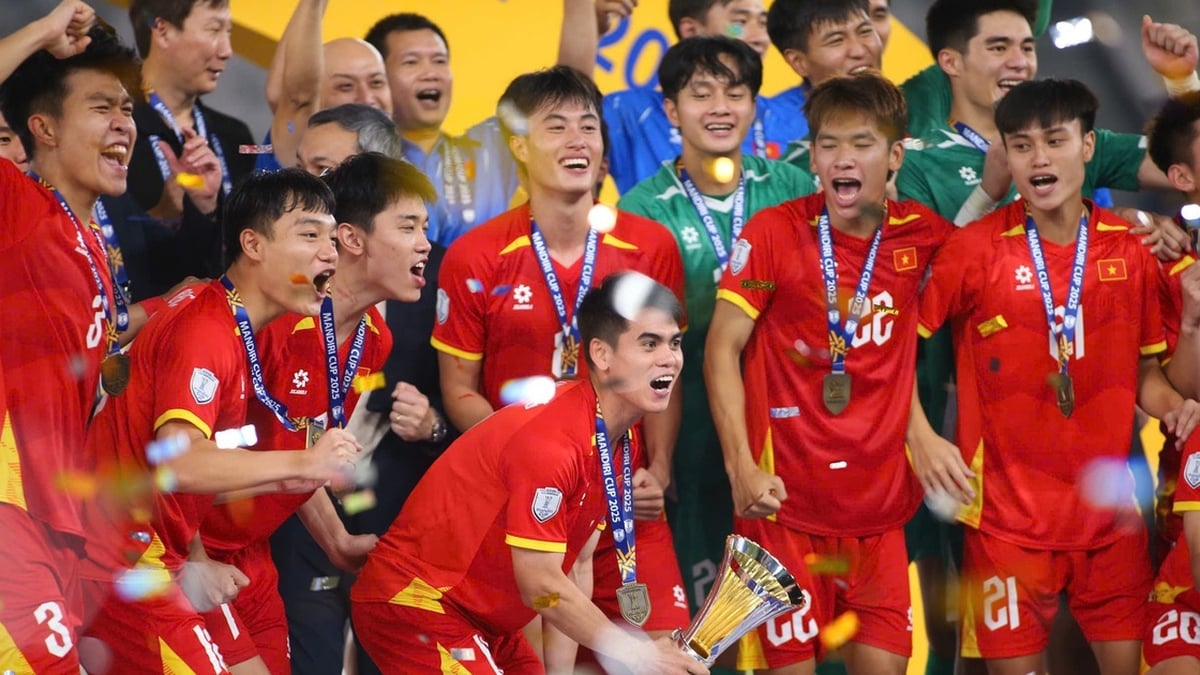


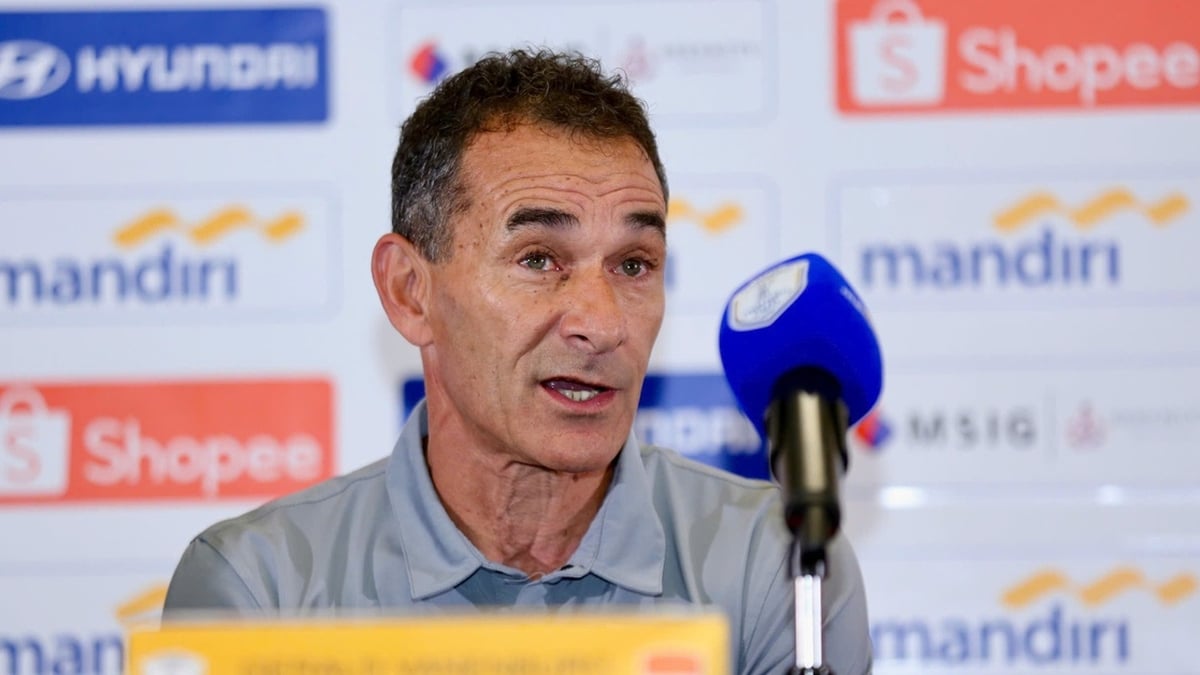

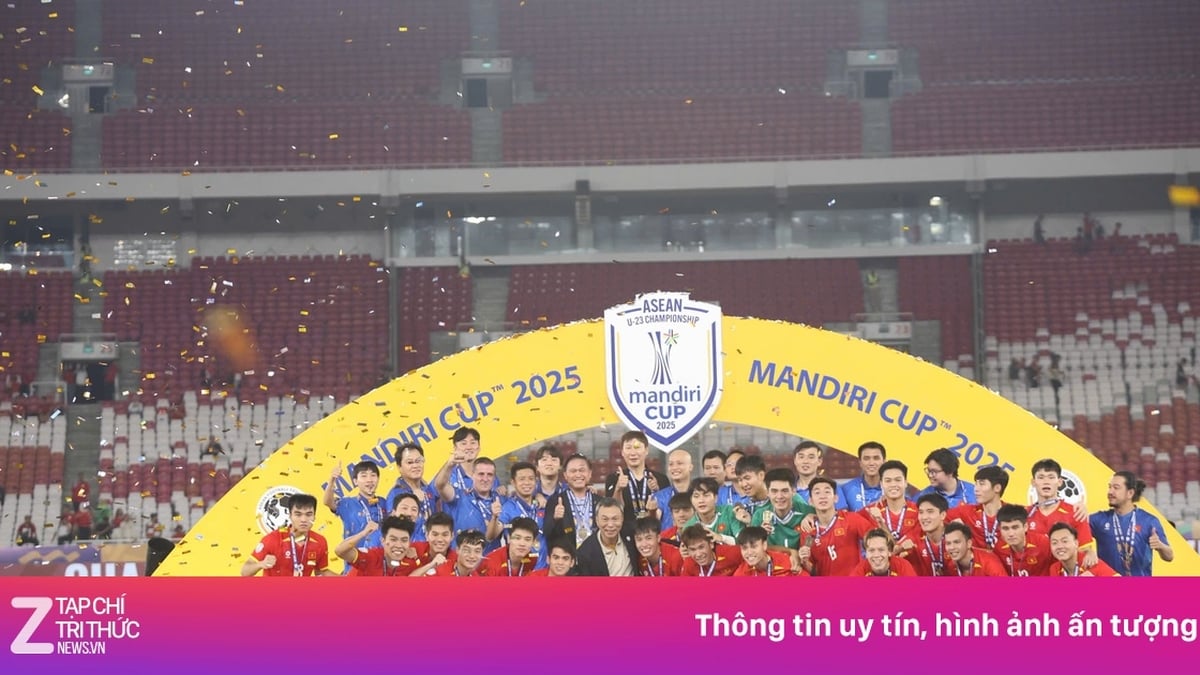
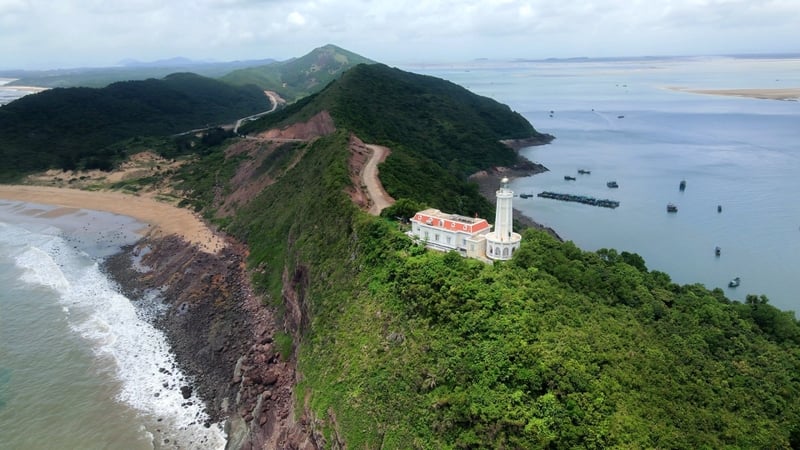










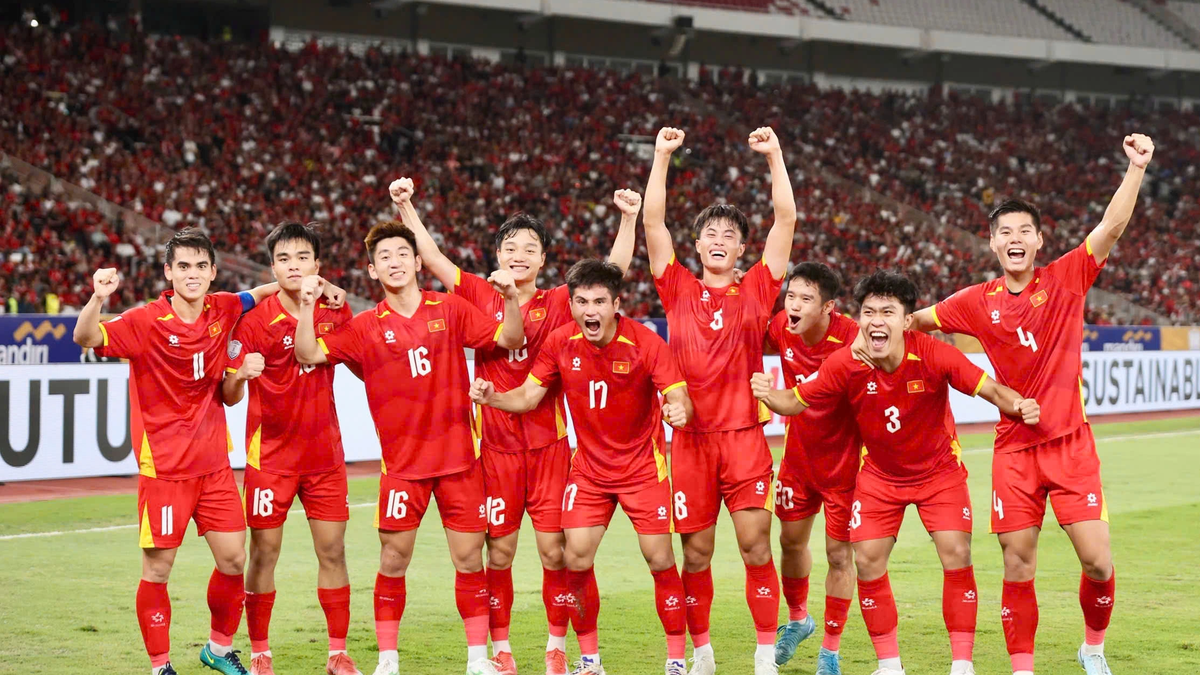

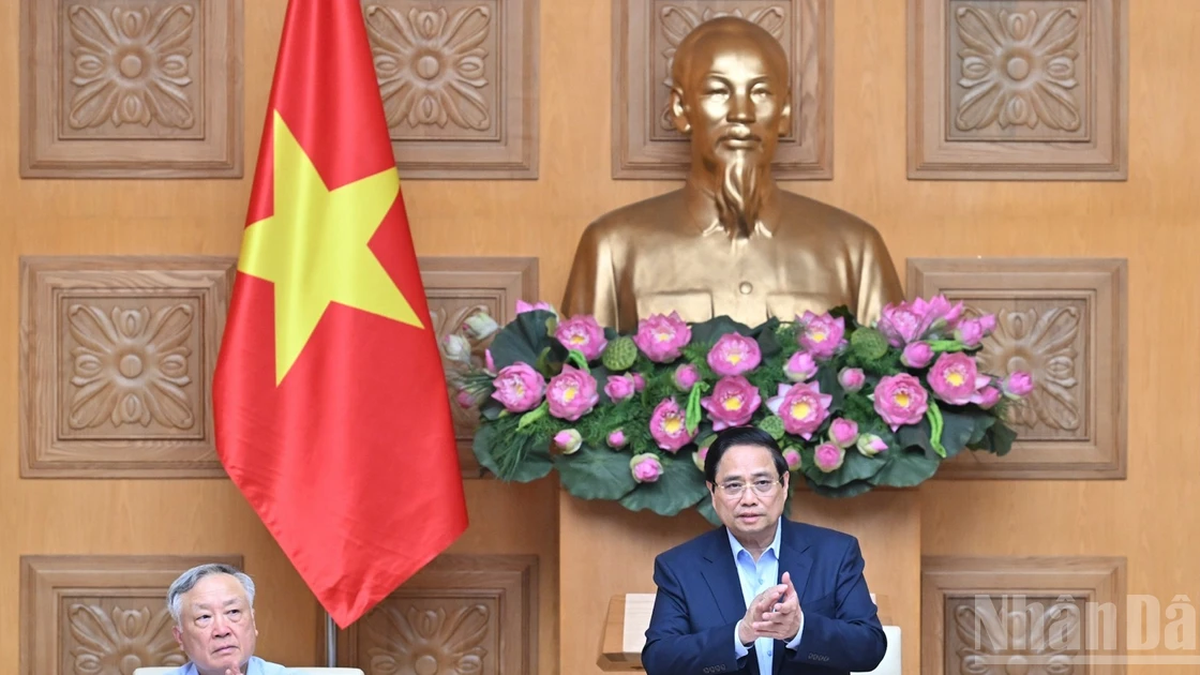



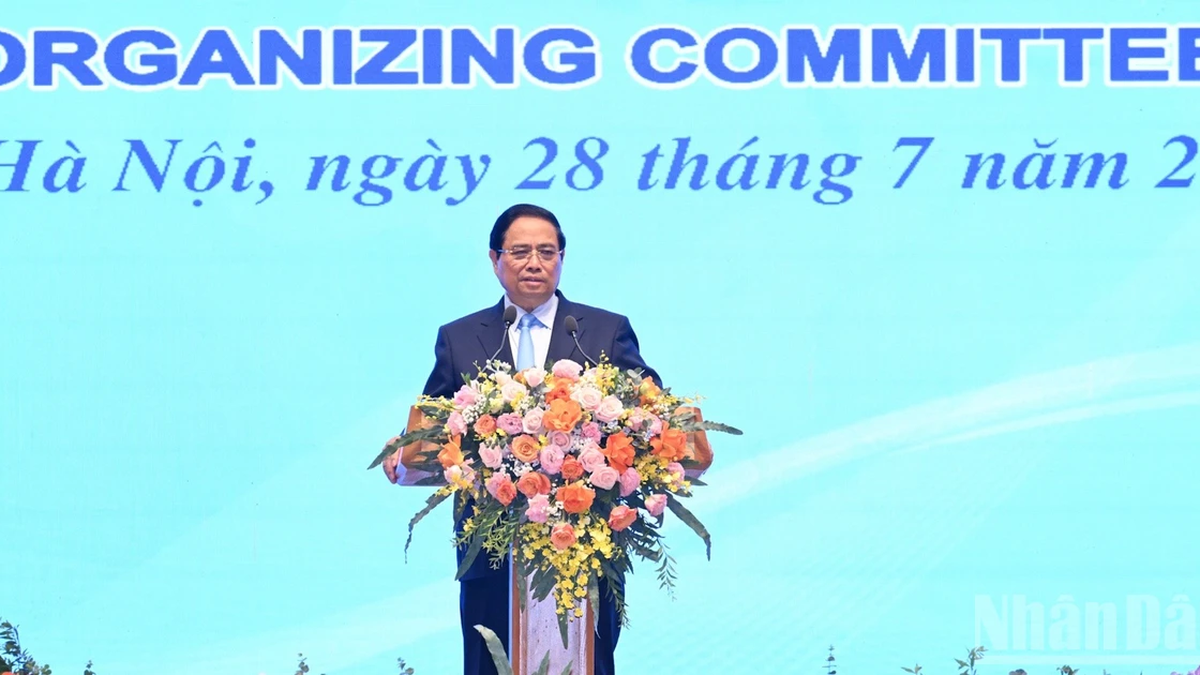
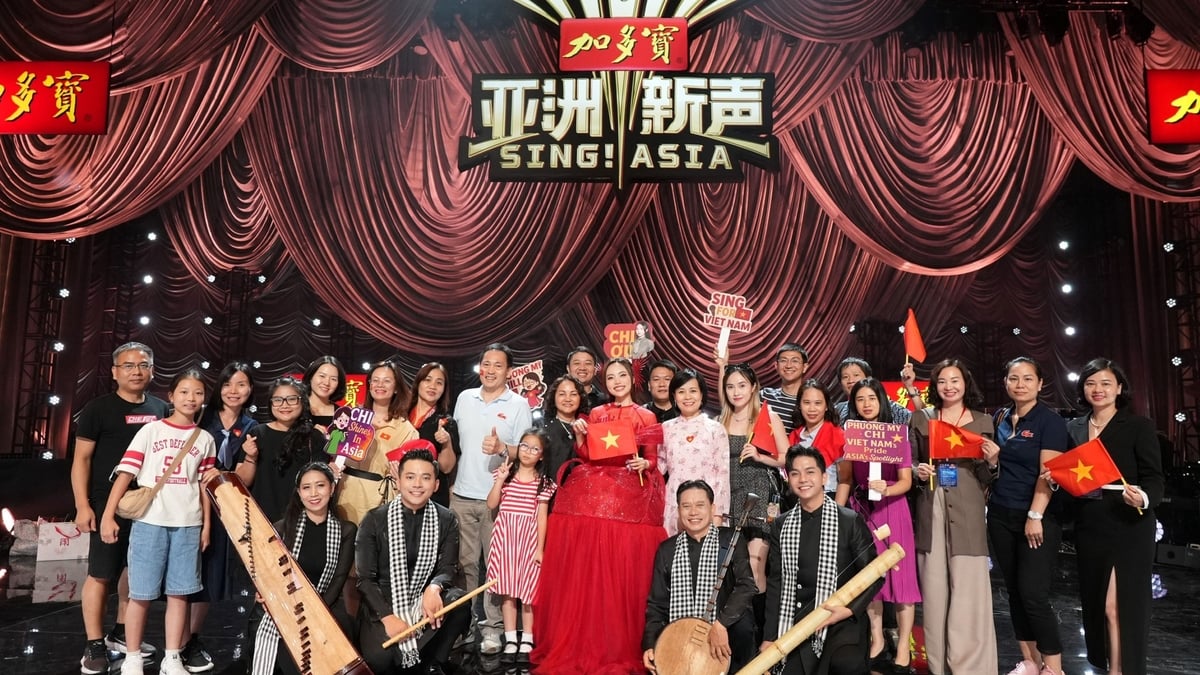
![[Photo] National Assembly Chairman attends the seminar "Building and operating an international financial center and recommendations for Vietnam"](https://vphoto.vietnam.vn/thumb/1200x675/vietnam/resource/IMAGE/2025/7/28/76393436936e457db31ec84433289f72)


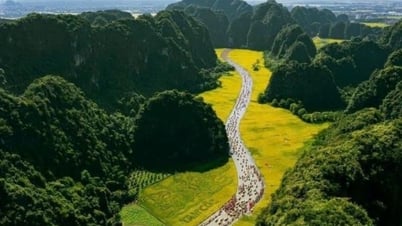

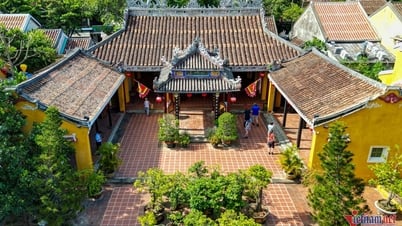

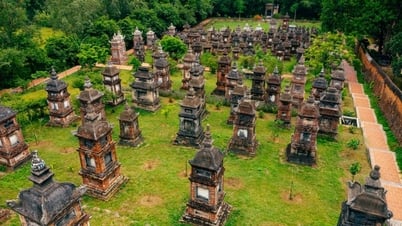

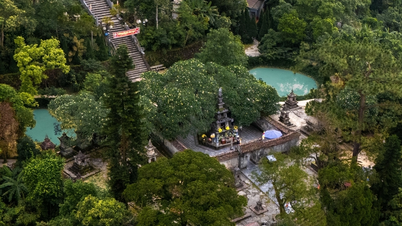

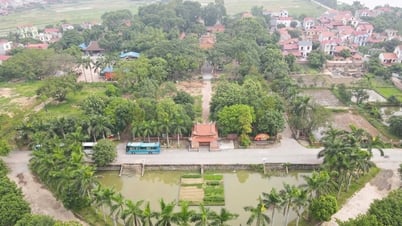
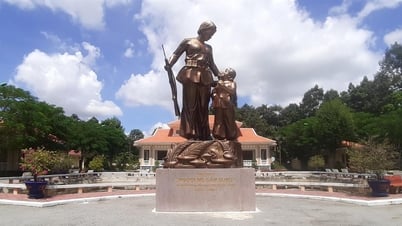
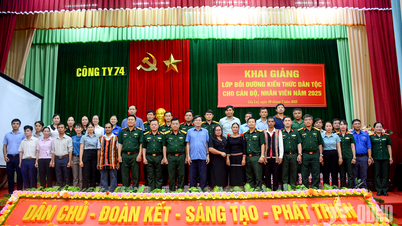

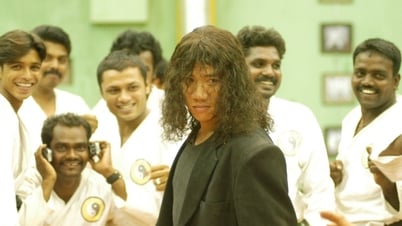



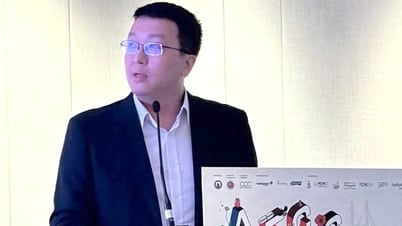

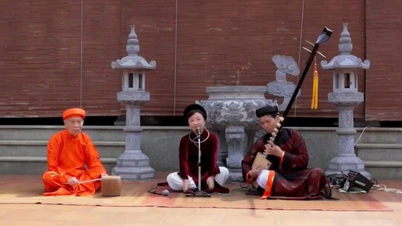
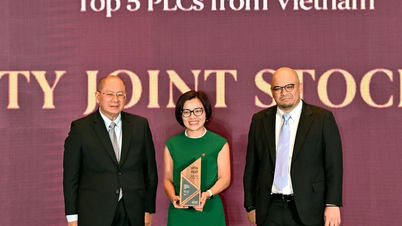






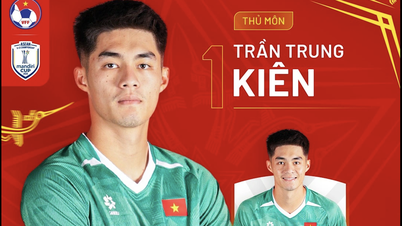





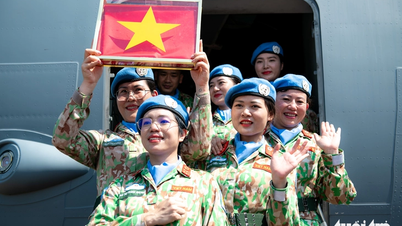


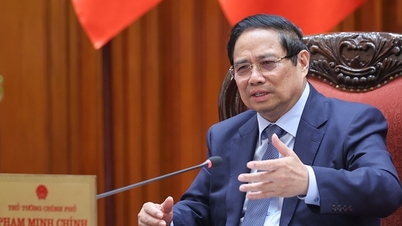


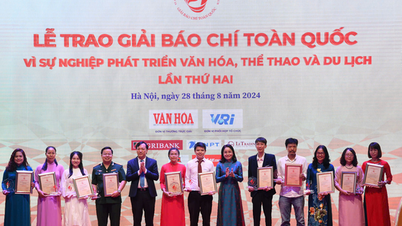























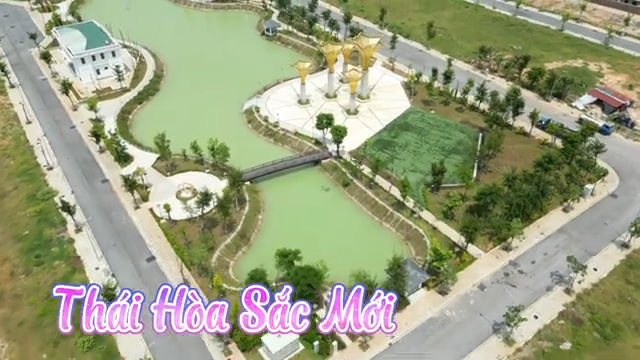

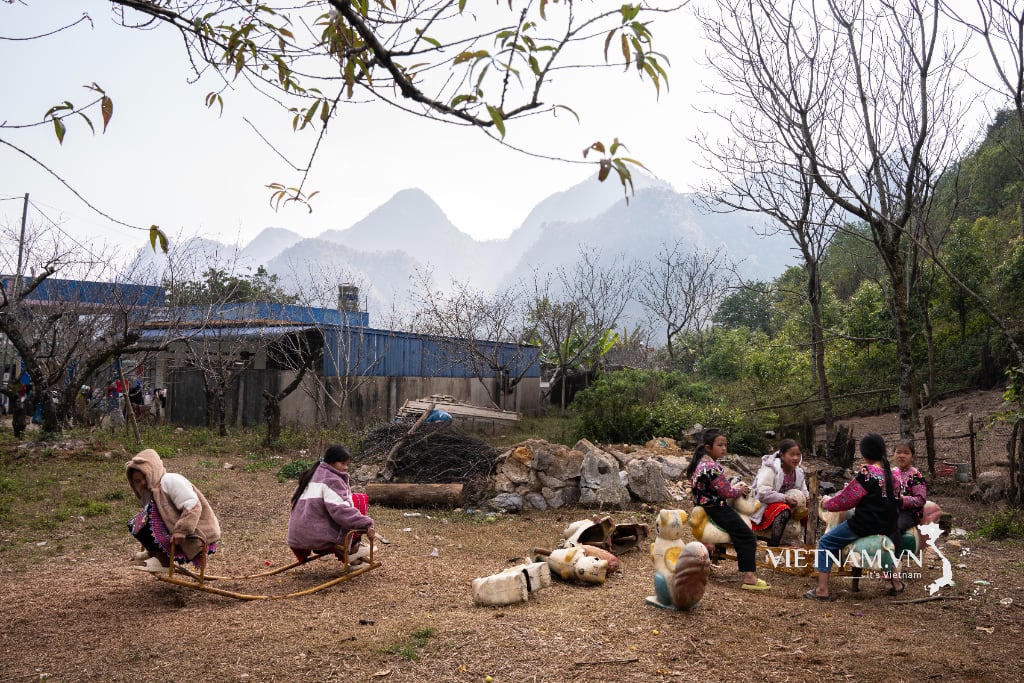
Comment (0)